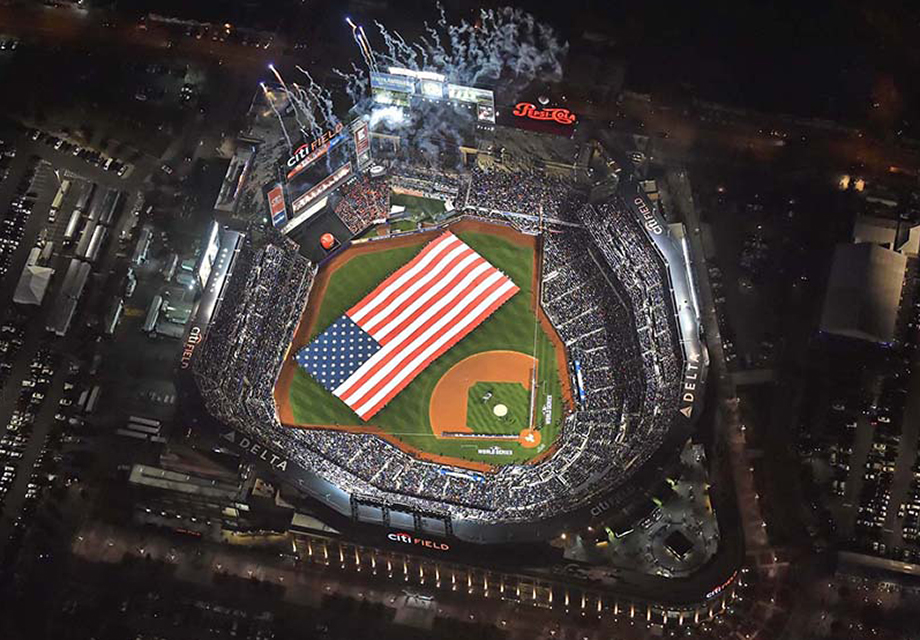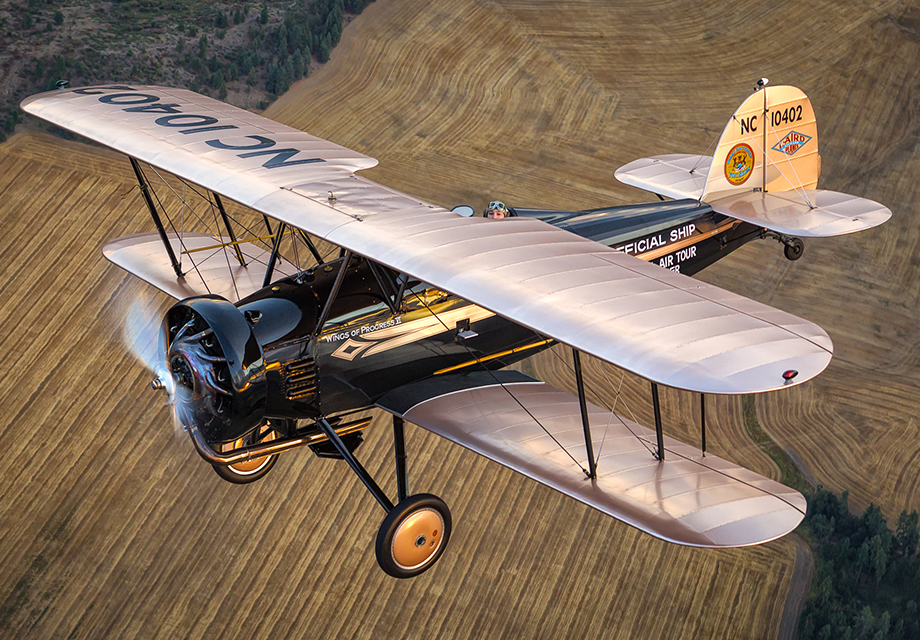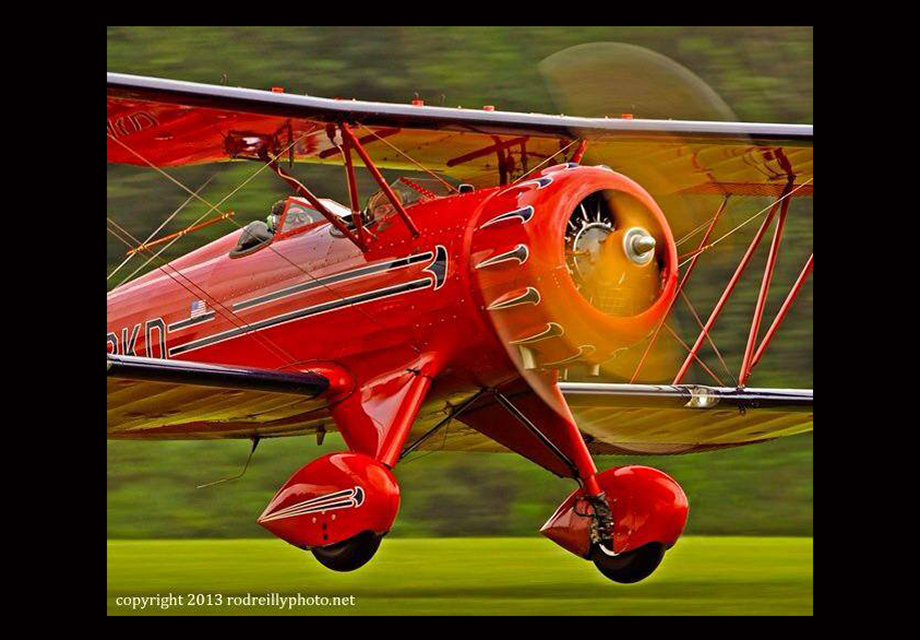Pilots and aviation photographers share a lot in common. Before pilots take to the skies, they perform preflight procedures that are designed to ensure the safety of their flights. Likewise, aviation photographers pre-visualize their photo shoots by analyzing weather, lighting, subject matter, and backgrounds before clicking their camera's shutter release button.
Follow along as a handful of visual aviation specialists describe how careful attention to detail led to successful photo missions that captured a fleeting moment of time.

Former New York Post photographer and photo editor Kevin Coughlin felt the New York Mets first World Series game at their new Citifield ballpark would hold significant historical importance when the team faced against the Kansas City Royals on Oct. 30, 2015.
Coughlin is a pilot and a Cessna 150 owner, so he was realistic about the challenges he had to tackle before he “pitched the idea of an aerial photo to all of the local and national media outlets.”
He made arrangements with New York Center and LaGuardia air traffic controllers “to be at an altitude of 3,100 feet so as not to eclipse the TFR” above Citi Field during a professional sporting event. Coughlin, who also operates Long Island Aerial, said he’s worked with the New York controllers during other significant events and “they know I am a responsible pilot and photographer. When I say I'm going to be at a certain location and altitude for a specified amount of time ... I keep my word and comply with all ATC orders. That’s how I built my trust with controllers and it goes a very long, long way.”
Coughlin’s idea was to capture the unfurled red, white, and blue American flag covering most of the stadium’s field, while fireworks ignited form the grandstands, at dusk. “Naturally, my first concern was what the weather was going to be like” during the opening ceremony, he said. Clear skies and nearly standard temperature in the upper 50s welcomed Coughlin’s Cessna as he lifted off from Republic Airport in Farmingdale, New York, and began making “left orbits in a one-mile radius” near the stadium while he circled the ballpark at 90 miles per hour from 7:45 p.m. to 8:10 p.m. He applied 10-degrees of flaps to slow the airplane to about 80 mph and “continued shooting out the open left window” while a pilot friend handled the controls during critical stages of the orbit.
As the sun set and the stadium began to glow, Coughlin “saw it was exactly 8:07 p.m., right on time for Billy Joel to sing the national anthem.” He asked his friend to dip the left wing 30degrees to get a better angle on the field exactly as the anthem ended with a barrage of fireworks. “I knew immediately that I had something special,” Coughlin said. He chose ISO 4,500 to give him a shutter speed of 1/1,000 second, and he adjusted his vibration-reducing lens to its widest aperture of f/2.8. Coughlin used a Nikon D4S camera with a 70-200-mm telephoto zoom lens, framed at 86 mm. The New York Daily News splashed the photo across two pages in the next day’s editions.

Arizona-based aviation photographer Jay Beckman of Crosswind Images said his beautifully lit picture of a 1930 Laird LC-1B 300 in flight came together because of “a social media relationship with Ryan Pemberton and a situation where I just happened to be there.”
Pemberton contacted Beckman, asking “if I could help him tweak a static photo of the Laird that he had shot at Felts Field. That relationship led to an invitation for a visit if I were ever in the Pacific Northwest.”
Fast-forwarding a bit found the photographer with a reason to be in the neighborhood “so I took him up on the offer,” Beckman said.
“Ryan Pemberton flew the Laird while Julie Ingraham flew a Beechcraft 36 as the photo ship with Chris Frasier as the spotter,” he said. Storms were in the area but the group was “fortunate to find a calm patch of sky a little to the north and west of Felts Field yielding some pretty dramatic backgrounds” to many of the images captured that afternoon. Beckman trained his Canon EOS-1D Mark IV on the Laird at ISO 400, with a shutter speed of 1/125 at f 4.5, framed at 51 mm.

Rodman Reilly said that as a child he looked to the sky every time he heard an airplane’s throaty roar over his Long Island, New York, home. Reilly grew up “in the flight path of Kennedy Airport” and he was intrigued by the variety of commercial and military airplanes entering and leaving the pattern. As a youth, he caught rides to nearby Lindbergh Field with his parents or their friends “so I could get a better look at the airplanes parked on the ramp. Old Connies would be there with their tails hanging over the fence” and it fascinated the youngster. Reilly’s love of aviation followed him to his professional photography career where he manages to combine both passions. The photo director for Georgia Gwinnett College north of Atlanta can be spotted toting his Nikons and long glass along the flight lines at regional and national fly-ins.
The Waco biplane taking off from the grass strip at Georgia’s Candler Field Museum during the museum's Spring Vintage Days is one of Reilly’s favorites, and it embodies the careful attention to detail he deploys. Reilly mounted a Nikon 400 mm telephoto lens to his Nikon camera and chose a slow shutter speed of 1/80 of a second to blur the propeller. The camera was panned to follow the airplane as it took off from the grass and “the slow shutter speed and pan resulted in the blurred background, which imparts a sense of speed,” he said. “Candler Field Museum has great access to their flight line and runway” so Reilly was able to get within 10 feet of the grass strip during flight operations, affording an excellent viewpoint.

North-Carolina-based aviation photographer Arnold Greenwell participated in the Gathering of Mustangs and Legends in Columbus, Ohio where “the remaining World War II P-51 Mustangs from around the world and their pilots gathered one last time to celebrate their history and accomplishments” in 2007. Greenwell joined a “four-man team charged with documenting the event and creating once in a lifetime aviation art.” The photographers had access to two B-25 Mitchell bombers as photo platforms. Tethers and other safety equipment strapped the photographers to their photo ships. Greenwell said the group flew air-to-air missions “at dawn and dusk with 4 a.m. safety briefings and each mission was highly orchestrated and planned in infinite detail.”
The photography began after the Mustangs formed up on the photo ship, beginning with in-trail, nose-on, tight formations. Photographers made requests for different angles by going through the photo airplane pilot who relayed it to the formation lead and “radio communication was maintained throughout the shoot. The pilots had the final say on whether to comply” or call off the formation for safety of flight or other reasons. “Most of the missions were low level whenever possible,” Greenwell said.
“To those up early enough and standing outside, the scene must have resembled the English countryside during World War II” as formations of bombers and fighters flew over the Ohio landscape.
By their commitments to safety, planning, and detail, Coughlin, Beckman, Reilly, and Greenwell proved that it took much more than a quick shutter finger and good light to create their magical aviation moments.



